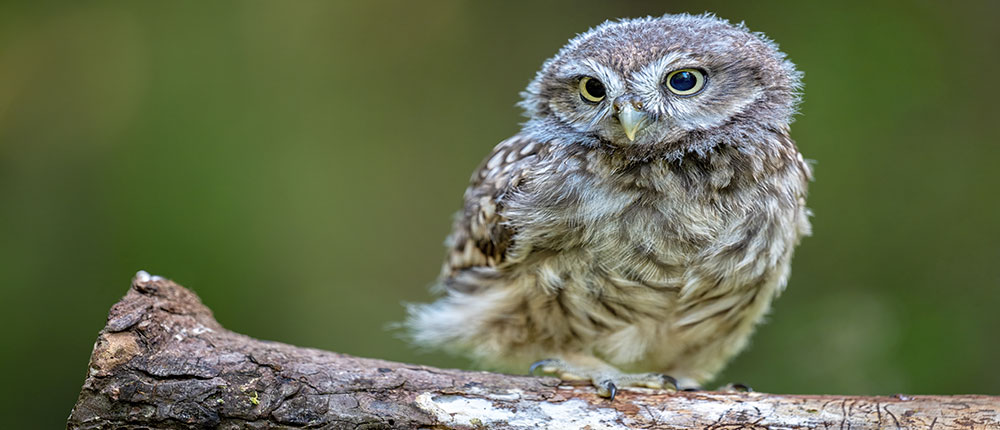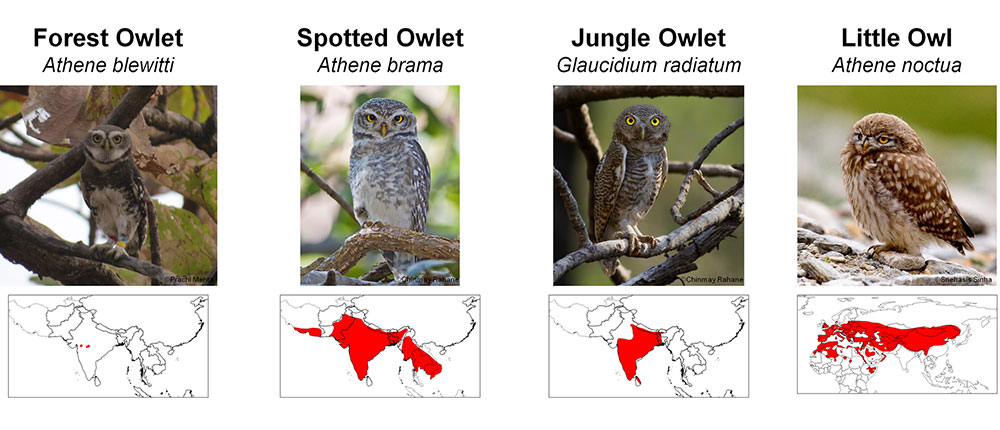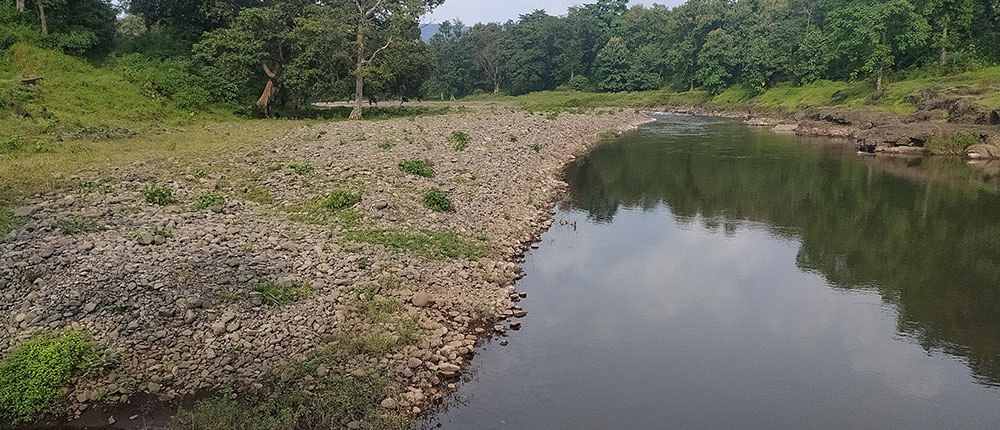Forest owlets are an endemic species to India. They are found only in small pockets of forest patches in India, and nowhere else in the world. The species were thought to be extinct, until a group of scientists rediscovered the species, and then started working on them. The forest owlets are threatened by severe habitat loss and development projects, apart from changes in climate. Sharada Balasubramanian writes about the birds, their rediscovery and how their habitat is threatened by ancient climate change and landscape modification.

Forest owlets, a critically endangered bird, is found only in India, and nowhere else in the world. The bird was first spotted in the 1880s. After that, for almost 100 years, no one even discussed these birds.
The history of forest owlets dates back to 1872. It was the time when an Irish officer described forest owlets from Chhattisgarh in Eastern Madhya Pradesh. He thought the owl looked different. Until 1884, seven of these birds were collected from different Indian states. This was to create a distribution record of the forest owlets from a particular region or a time. After that, no one even heard about forest owlets.
In 1976, Ripley, a well-known ornithologist and author of prominent bird reference books, wrote a paper. In this paper, he listed the possibly extinct birds of India—those birds of which there were no records—and forest owlet was one among such birds. These birds looked similar to the common spotted owlet, and were often mistaken for the same. But these species were different from the spotted owlet.
Two crucial research papers were published on the forest owlets. One is understanding the bird's diversity through genetic research, and the other one is how ancient climatic change impacted the distribution of these birds. This was for the first time that genetic research was done on the forest owlets.
Rediscovery of the Species
The forest owlets were thought to be extinct. However, after 113 years of silence on forest owlets, in 1997, Pamela Rasmussen, a taxidermist from the Smithsonian Institute was compiling the book, Birds of South Asia. While she was looking at the forest owlet specimen, she started comparing it with the illustration of the bird in Salim Ali's book. Then, she realized, this was different, because it had a white belly, and looked strong and big. Rasmussen and her team left for India in 1997 and started searching for the bird. While searching, they found a different looking bird in an open forest in Maharashtra. They realized it was the forest owlet.
Soon after Rasmussen's rediscovery, the Bombay Natural History Society started their survey. After that, more people worked on the species. The well-known ornithologist Salim Ali also looked for the forest owlet at Melghat in Maharashtra. However, he could not detect the species. Researchers say that, this is perhaps, because he did not have the calls of the bird. Prachi Mehta, senior scientist and executive director of Wildlife Research and Conservation Society, has been working on the ecology of forest owlets. From 2005, Prachi and her team started their survey. To begin with, they neither had the bird skin or the call. Also, there was very little historical information about forest owlets.
Shomita Mukherjee, a scientist from Salim Ali Centre for Ornithology and Natural History who worked on the forest owlet research believes people could have just stopped spotting these species. She says, "The birds did not disappear. People were not locating it. Also, the bird looks similar to spotted owlet. So it could have been missed."
Prachi concurs, "The calls of forest owlet and spotted owlet were different. They also looked different. But only a trained eye could spot this difference." Shomita wanted to look at the distribution of the species, like, where they occurred. She says, "Though the birds were not found in places where they were originally found, like Chhattisgarh, it does not mean that the birds are not there anymore. Just that they were perhaps, not detected during the surveys."
From 2005–2008, Prachi and her team surveyed across five Indian states, looking for forest owlets. She published the paper in Birding Asia. Prachi says, "Salim Ali looked for forest owlet in Melghat but could not detect the species. He did not have the calls of the bird.

Tree Availability
Prachi and her team started the study in 2012. She says, "In a new site in Madhya Pradesh, the population is there, but these are reserved forests. And in these forests timber logging happens. During 2013–2017, we studied to understand the impact of tree felling, human disturbance and timber logging on forest owlets."
Forest owlets prefer teak trees in the woods. They need larger, older trees to find cavity and nest. Logging in certain areas, however, affects this nesting. More specifically, in those forested spaces where teak is logged illegally.
"Large old trees are needed to find cavity and for nesting. Illegal teak logging impacts these spaces. They are secondary cavity nesting birds. They need preformed cavity. With tree felling and logging, the resource for the species is gone until a woodpecker or another bird comes and makes another cavity," says Prachi.
The forest owlets take prey inside the cavity and hide it. It is called cashing. It is something like refrigeration where the birds hide their preys for the rainy day. This is a part of owlets' life. If the cavity has a small entrance, predators like mongoose or snake will go inside. Also, the bird has to struggle to get inside this entrance. So, having the right size of cavity is important for forest owlets.
"In Melghat, where the birds are found, they mostly go for teak trees. However, in Madhya Pradesh, they did not go for teak, because of lesser availability of these trees. Instead, they picked soft wood trees; however, that affects the species survival, because we do not know if the wood is good enough to hold," says Prachi.
Pankaj, an evolutionary ecologist, and an assistant professor at MIT World Peace University in Pune, worked on forest owlets. He says, "Land use in non-forest activities is an issue. In Melghat, which is a protected tiger reserve there is very less disturbance. The problem is the population outside the protected area. That is where most of the concern comes. If legal protection is not available, the land is shared and they use resources the way they want to. That is where the issue of conservation pops up."
Fragmented habitats due to development breaks contiguity in space. If there is a better habitat connectivity, there is better conservation. In Madhya Pradesh, through interaction with the forest officers, Prachi and her team could convince them to not fell trees in a compartment where illegal felling happened, in those areas where forest owlets were found. This was challenging as teak tree was a major money resource. Prachi believes that the researchers and forest department should work together on this.

Understanding Forest Owlets with Research
This also brings us to a crucial issue of land use change. How could fragmented habitats impact the distribution of forest owlets? How is the land used? Or how have the habitats changed over the years? These are the key drivers to understand the space where forest owlet dwells.
Pankaj took this up in his research. He analysed something called a vegetation fraction. This is more like a tool to monitor the land cover space. It is a great tool to look at ecological or environmental changes that are happening in a region. In areas where there was a very moderate change, let's say where the vegetation fraction has reduced or increased minutely, forest owlets have been found. And in those areas where there was a drastic change in vegetation fraction, forest owlets were not found.
To know where the forest owlets go, how they live, where they find their prey, what they eat, where they nest, there was so much more to be understood. To find an answer, Prachi took up colour banding technique. She received training on this from the owl scientists in the US. One can watch these birds through colour bands. Since all these owlets look similar, colour bands help to differentiate the birds.
If the bird flew away after breeding, did it come back the next year? And if it did come back, was it the same bird? With colour banding, one can understand this and also the behaviour of the birds. Prachi says, "Where they nest, what they eat, we can know this from colour bands. It is a colourful strip that is attached on the leg of the bird and this is done with the permission of the forest department."
She adds, "Since we do not have an estimate on the number of forest owlets, banding helps. This band weighs 0.1 gm, is UV resistant and comes in various colours. We can understand the movement of the birds with the band." The research, for one looked at ecological aspects. That gives us more information about the owlets. Along with ecology, genetics was looked into, bringing in new information that was not available earlier. For instance, from the bird feathers that Prachi had, Pankaj looked at the DNA sequencing of the bird. All the earlier data on forest owlets was relating to morphology—which is size, shape, or structure of the bird. This study went one step further by gathering genetic data.
The genetic research opened information about the species, which were not known earlier. The confusions of the scientific classification of the bird were also solved through genetic research.

Climate and Bird Distribution
This led to another probe—how could the population of forest owlets have diverged in different climatic periods. This question led to another publication on ancient climate data and divergence. Interestingly, the time of divergence of forest owlet coincided with the Plio Pleistocene time. This is a time period which goes back to five million years. The divergence of the forest owlets is estimated between 4.3 and 5.7 million years ago. And when these time periods matched, it led to an idea that perhaps this divergence of forest owlets was connected to changes in ancient climate. And there could be some answers on why the species might have diversified from its ancestors. Is forest owlet narrowly distributed because of the past climatic changes? Also, in this time that we are living, are climatic changes explaining the current distribution of the forest owlets? The explorations were on. And here's what Robin Vijayan, scientist from the Indian Institute of Science Education and Research says, "The species is strongly tied to climate, and they are isolated due to break in the contiguity. This is a natural process that happens over millions of years and is not unique to forest owlets."
Where the first published paper on genetic study was being done, Pankaj found a clue on how climate could be shaping geographical distribution of the species. Both the understanding of the ecology and genetic analysis had led to increased information on the forest owlets. Researchers believe that conservation genetics could offer vital insights on the species. However, there are very few groups doing this in India.

Pankaj believes that if the population connectivity and genetics of the forest owlet were known, we could have got a great idea on their migration patterns. That would be really good if you want to do conservation management of the species.
Genetics, land use change, ecology, colour banding, ancient climate data and its link to forest owlet divergence, they all contributed to better understanding of forest owlets. Not much is known about owls in India. That is the reason why there is a need for long-term studies on owls. There is still no accurate estimate on the forest owlet numbers, but what we now know is that the forest owlets are in four pockets of India. Where diverse stakeholders are working on protecting the forests and species, Prachi believes if these people come together, it will work towards conservation.
Along with conservation research, Prachi has been roping in communities that are associated with these forests. Prachi says, "You have to involve local people. They have no income. If there is a tree in their backyard, they would not think there is an owlet and I should not cut it. Also giving money to the communities is not a long-term solution."
The local women who were skilled in handcrafts were roped in to make products such as keychains and bags based on the species they shared their habitat with. "We told them we will market it, and in return, they do not harm the owl habitats. This is a livelihood conservation programme we did. This will also provide them with income. They will think twice before they do something," says Prachi.
"Though research is happening on forest owlets, there is a need for long-term studies and surveys in these very areas. This will lead to further understanding of the species," says Shomita. #
Sharada Balasubramanian is the recipient of the Asian Environmental Journalism Award 2019, Environmental Journalist of the Year, Environmental Story of the Year, and the Prem Bhatia Award for Excellence in Environmental Reporting 2019, amongst several other prominent environmental journalism awards.
This article was first published in TerraGreen magazine.
